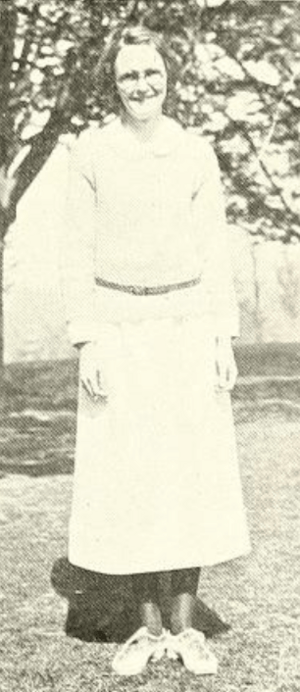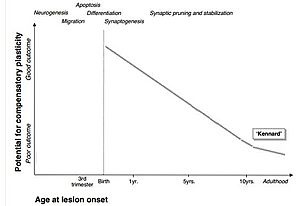Margaret Kennard facts for kids
Quick facts for kids
Margaret A. Kennard
|
|
|---|---|

Margaret Kennard, from the 1922 Bryn Mawr College yearbook
|
|
| Born |
Margaret Alice Kennard
September 25, 1899 |
| Died | December 12, 1975 (aged 76) |
| Nationality | American |
| Education | Bryn Mawr, Cornell, Yale |
Margaret Alice Kennard (born September 25, 1899, died December 12, 1975) was an important American scientist. She was a neurologist, which means she studied the brain and nervous system. Dr. Kennard mostly researched how brain damage affected primates, like monkeys. Her most famous discovery is called the Kennard Principle. This idea explains that young brains can often recover better from injuries than adult brains.
Margaret Kennard's Life
Margaret Kennard finished her studies at Bryn Mawr College in 1922. She later received a special grant, called a Rockefeller Traveling Fellowship. This allowed her to study in Europe from 1934 to 1936. She also researched how different medicines, like stimulants and depressants, affected monkeys with brain injuries.
Understanding the Kennard Principle
The Kennard Principle is a key idea in brain science. It says that younger brains are better at reorganizing themselves after damage. Dr. Kennard first wrote about this in 1936.
Her research showed that how well a brain can heal depends on its age. This was one of the first times scientists had strong proof. It showed that age affects how flexible and adaptable the brain is. This flexibility is called neuroplasticity.
Dr. Kennard worked closely with another scientist, John Fulton. They did important studies together on the brains of young animals.


